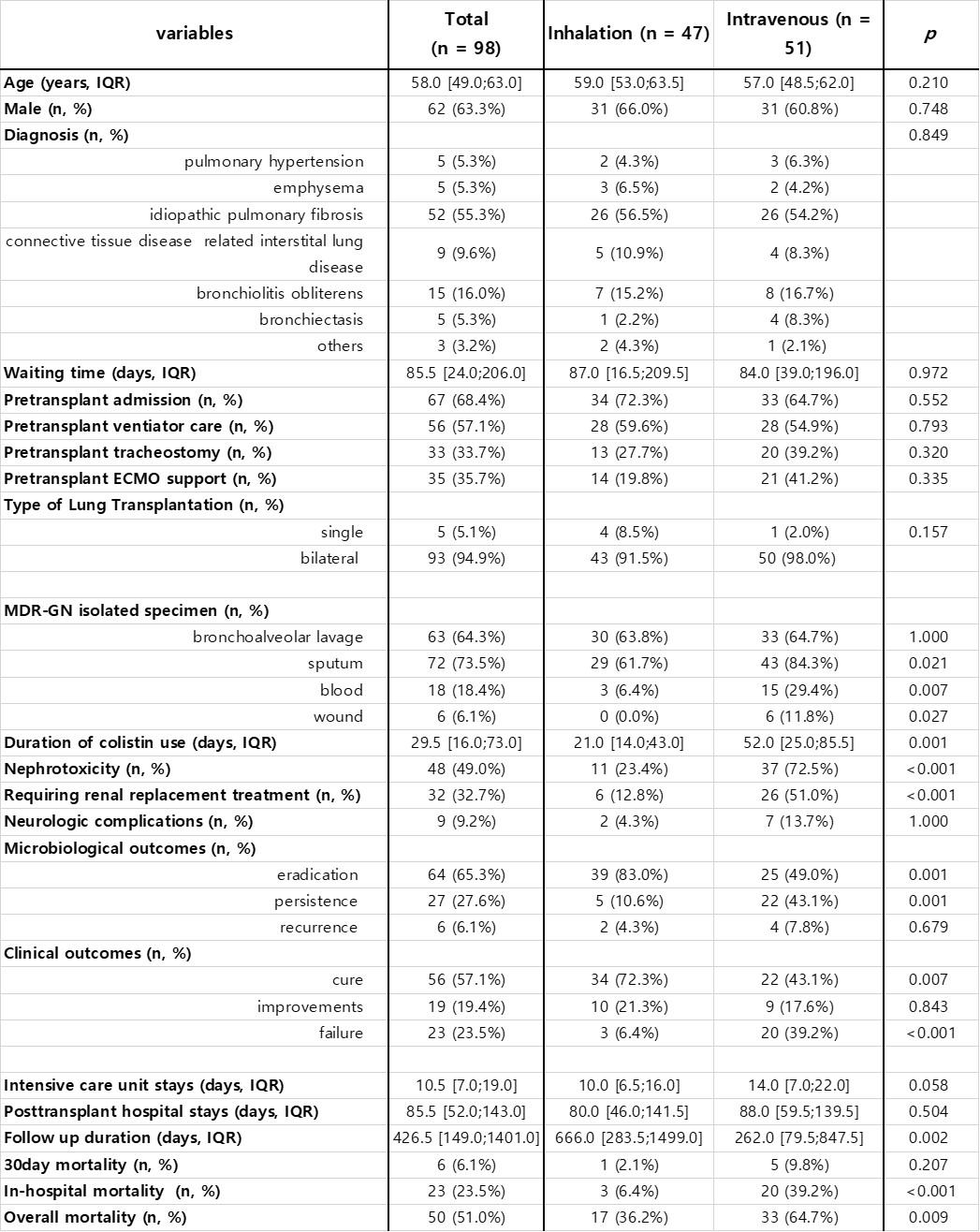Inhalation Alone versus Inhalation Plus Intravenous Colistin for Multidrug-Resistant Gram-Negative Bacterial Infection After Lung Transplantation
1Department of thoracic and cardiovascular surgery, Yonsei University College of medicine, Seoul, Korea, Republic of, 2Division of Pulmonology, Department of Internal Medicine, Yonsei University College of medicine, Seoul, Korea, Republic of, 3Division of Infectious Disease, Department of Internal Medicine, Yonsei University College of medicine, Seoul, Korea, Republic of
Meeting: 2022 American Transplant Congress
Abstract number: 46
Keywords: Bacterial infection, Infection, Lung infection, Lung transplantation
Topic: Clinical Science » Lung » 64 - Lung: All Topics
Session Information
Session Name: Infectious Considerations for Lung Transplantation
Session Type: Rapid Fire Oral Abstract
Date: Sunday, June 5, 2022
Session Time: 3:30pm-5:00pm
 Presentation Time: 4:20pm-4:30pm
Presentation Time: 4:20pm-4:30pm
Location: Hynes Room 210
*Purpose: After lung transplantation, patients are exposed to the risk of various infections accounting for morbidity and mortality. Multidrug-resistant gram-negative (MDR-GN) bacteria are emerging pathogen. Intravenous colistin retains good activity against MDR-GN, despite its known nephrotoxicity, especially with concurrent calcineurin inhibitor. Several studies revealed nebulized colistin provides fair responses with less nephrotoxicity. Since there are little data about the efficacy of nebulized or intravenous colistin in MDR-GN infection after lung transplantation, this study compared clinical outcomes of these two delivery routes in lung transplantation.
*Methods: From January 2015 to December 2020, 307 lung transplantations were performed. 98 patients received colistin due to MDR-GN. Forty-seven patients received nebulized colistin and 51 patients were treated with intravenous with or without inhalation.
*Results: Acinetobacter baumannii was the predominant primary microorganism (55.1%), followed by Klebsiella pneumoniae (28.6%). No significant difference of basic characteristics was observed between two groups (Table 1). The intravenous showed longer use of colistin (p=0.001) and MDR-GN was more frequently isolated from blood or wound (p=0.007, p=0.027, respectively). The median creatinine clearance before colistin was not distinguishable between the groups. The incidence of nephrotoxicity was significantly higher in the intravenous group (p<0.001). The achievement of eradication and clinical cure were significantly higher in the inhalation group than the other group (p=0.001, p=0.007, respectively).
*Conclusions: Our findings suggested that colistin Inhalation alone could provide an effective and safe treatment option for MDR-GN infection after lung transplantation. However, indication for nebulized colistin should be decided deliberately, especially when MDR-GN is isolated from blood or infected wound.
To cite this abstract in AMA style:
Kim H, Yang Y, Woo A, Jeong S, Kim S, Lee J, Park M, Paik H. Inhalation Alone versus Inhalation Plus Intravenous Colistin for Multidrug-Resistant Gram-Negative Bacterial Infection After Lung Transplantation [abstract]. Am J Transplant. 2022; 22 (suppl 3). https://atcmeetingabstracts.com/abstract/inhalation-alone-versus-inhalation-plus-intravenous-colistin-for-multidrug-resistant-gram-negative-bacterial-infection-after-lung-transplantation/. Accessed December 13, 2025.« Back to 2022 American Transplant Congress

